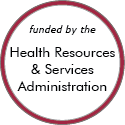Rural Project Examples: Community health workers
Effective Examples
Kentucky Homeplace
Updated/reviewed October 2024
- Need: Rural Appalachian Kentucky residents have deficits in health resources and health status, including high levels of cancer, heart disease, hypertension, asthma, and diabetes.
- Intervention: Kentucky Homeplace was created as a community health worker initiative to provide health coaching, increased access to health screenings, and other services.
- Results: From July 2001 to June 2024, over 196,801 rural residents were served. Preventive health strategies, screenings, educational services, and referrals are all offered at no charge to clients.
Community Health Worker-based Chronic Care Management Program
Updated/reviewed August 2024
- Need: Improve healthcare access and decrease chronic disease disparities in rural Appalachia.
- Intervention: A unique community health worker-based chronic care management program, created with philanthropy support.
- Results: After a decade of use in attending to population health needs, health outcomes, healthcare costs, in 2024, the medical condition-agnostic model has a 4-year track record of financial sustainability with recent scaling to include 31 rural counties in a 3-state area of Appalachia and recent implementation in urban areas.
The Health-able Communities Program

Updated/reviewed August 2024
- Need: Expand healthcare access for the more remote residents of 3 frontier counties in north central Idaho.
- Intervention: With early federal grant-funding, a consortium of healthcare providers and community agencies used a hybrid Community Health Worker model to augment traditional healthcare delivery services in order to offer a comprehensive set of health-related interventions to frontier area residents.
- Results: With additional private grant funding, success continued to build into the current model of an established and separate CHW division within the health system's population health department.
Health Coaches for Hypertension Control

Updated/reviewed September 2023
- Need: A cost-effective approach to help rural patients with hypertension learn to manage their condition.
- Intervention: Community volunteers trained as health coaches provided an 8-session hypertension management training program to hypertension patients older than 60, with an optional supplemental 8 sessions focused on nutrition and physical activity.
- Results: Just 16 weeks after the program, participants had improved systolic blood pressure, weight, and fasting glucose, greater knowledge of hypertension, and improved self-reported behaviors.
Promising Examples
SASH® (Support and Services at Home)
Updated/reviewed April 2025
- Need: In Vermont, the growing population of older adults, coupled with a lack of a decentralized, home-based system of care management, poses significant challenges for those who want to remain living independently at home.
- Intervention: SASH® (Support and Services at Home), based in affordable housing and their surrounding communities throughout the state, works with community partners to help older adults and people with disabilities receive the care they need so they can continue living safely at home.
- Results: Compared to their non-SASH peers, SASH participants have been documented to have better health outcomes, including fewer falls, lower rates of hospitalizations, fewer emergency room visits, and lower Medicare and Medicaid expenditures.
Health without Borders


Updated/reviewed January 2025
- Need: To improve the health of communities in the south central region of New Mexico.
- Intervention: A program was developed to address diabetes prevention and control, behavioral healthcare, and immunization in Luna County.
- Results: During the program, 1,500 immunizations were distributed, baseline measurements of participants improved, and 935 new patients were seen for behavioral health issues.
Nurse Navigator and Recovery Specialist Outreach Program

Updated/reviewed December 2024
- Need: To properly address and treat patients who have concurrent substance use disorders and chronic healthcare issues.
- Intervention: A referral system utilizes community health workers (CHWs) in a drug and alcohol treatment setting. A registered nurse helps with providers' medication-assisted treatment programs.
- Results: This program has reduced hospital emergency visits and hospital readmissions for patients since its inception.
Prevention through Care Navigation Outreach Program

Updated/reviewed May 2020
- Need: To reduce the prevalence of diabetes and cardiovascular disease in rural Colorado.
- Intervention: Community Health Workers are utilized to create a system of coordinated care in Delta, Montrose, Ouray, and San Miguel counties.
- Results: As of 2018, 2,709 people have been screened for diabetes and cardiovascular disease, with many at-risk patients lowering cholesterol, blood pressure, and A1C levels after engaging with a Community Health Worker.
Other Project Examples
ROAMS (Rural OB Access & Maternal Service)

Updated/reviewed April 2025
- Need: To improve maternal health in northeastern New Mexico.
- Intervention: The Rural OB Access & Maternal Service program provides obstetric and maternal fetal medicine telehealth, home telehealth kits, and free access to lactation consultants and family navigators.
- Results: ROAMS has worked with 2,000 unique individuals since July 2021.
The Possibility Shop
Updated/reviewed March 2025
- Need: To connect people in need in Allegany County, Maryland, to health and human services and to items like hygiene products, food, and clothing.
- Intervention: The Possibility Shop partners with health organizations, insurance navigators, food banks, and other agencies.
- Results: In 2024, 15,246 service encounters occurred and 940 intakes to services were performed.
For examples from other sources, see:
